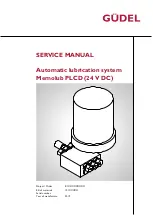
MultiRheo Filter MRF2
Starting up the MRF
HYDAC FILTER SYSTEMS GMBH
en(us)
Page 20 / 32
MoWa MRF2 3280803c en-us 2011-03-23.doc
2011-03-23
Notes on piping / hosing
Make sure that no vibrations or stress/loading from other machinery and equipment
are carried over to filter housing. If necessary, use expansion joints.
The pressure loss in a hydraulic line depends upon:
flow
rate
Kinematic
viscosity
pipe
dimensions
fluid
density
The pressure loss can be estimated for hydraulic oils as follows:
Δ
p
≈
6.8 * L / d
4
* Q * V * D
Δ
p = Pressure differential in [bar]
L
= Line length [m]
d
= Internal line diameter [mm]
Q
= Flow rate [l/min]
V
= Kinematic viscosity [mm²/s]
D
= Density [kg/dm³]
Mineral oil based hydraulic fluid has a density of
~ 0.9 kg/dm³.
This applies to straight pipelines and hydraulic oils. Additional threaded connections
and pipe bends increase the pressure differential.
Keep the height difference between the pump and the oil level in the tank as low as
possible.
Hoses must be suitable for suction pressures of at least -0.5 bar.
Constrictions in the connections and lines should be avoided. This could
compromise suction output and cause cavitation .
Take note that the nominal size of the connected hoses/piping must be at least as
large as the inlet port sizes.
Make sure that no vibrations or stress/loading from other machinery and equipment
are carried over to filtration unit. Use hoses or expansion joints if necessary.
Install a flexible hose which is resistant to negative pressure or a pipeline on the
suction port connection.













































